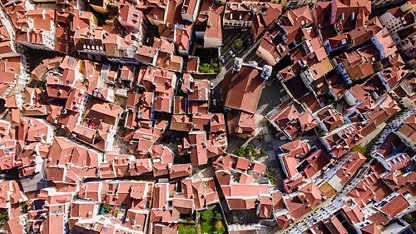To help tackle the estimated 40% of global carbon emissions coming from the built environment, Singapore has set itself the target of “at least 80% of buildings (by floor area) to be green by 2030” with its Singapore Green Building Masterplan.
Supporting this target is the recently updated Green Mark building certification scheme, now incorporating principles from the RICS Whole Life Carbon Assessment for the Built Environment guidance note, which mandates a whole life approach to reducing carbon emissions within the built environment.
While discussing the update to the Green Mark scheme at the opening ceremony of the International Built Environment Week 2021, Desmond Lee, Minister for National Development in Singapore, stated that the certification is aligned with the UN’s Sustainable Development Goals, taking reference from “leading international standards such as the Whole Life Carbon methodology developed by the Royal Institution of Chartered Surveyors”.
Decarbonising the built environment in Singapore
Measuring carbon emissions is one of the key challenges the built environment faces, as evidenced by 70% of contributors to the 2021 Sustainability Report by the RICS World Built Environment Forum, claiming to make no measurement of operational carbon emission across the life cycle of their projects.
Developed by the Building & Construction Authority (BCA), the new update to the Green Mark certification scheme (GM: 2021), places greater emphasis on the integration of smart technologies, the creation of healthier environments for building users and the reduction of embodied carbon in developments.
The carbon section of the Green Mark 2021 scores buildings on their whole life carbon performance, including, embodied carbon (for example, the carbon footprint of the construction materials), use of sustainable construction methods, and the sustainable fitting out of buildings. The section also evaluates the plans and delivery of those plans to transition buildings towards zero carbon emissions.
Benjamin Towell, FRICS, RICS Governing Council Member and Deputy Director at the BCA was a lead architect of the scheme and explained the decision to include the RICS’ Whole Life Carbon Assessment for the Built Environment methodology in the GM: 2021 Carbon section:
“We needed to look at a standard with a robust methodology, written by a range of experts and people involved in the industry. The RICS Whole Life Carbon Assessment guidance note was perfect for this, as it was written by industry for industry, it aligns with international standards, and has a very practical approach which can be globally applied ”
Benjamin Towell, FRICS
RICS Governing Council Member & Deputy Director at BCA
The growing focus on whole life carbon assessments also bodes well for industry professionals. As Benjamin Towell puts it, “just like RICS guidance and standards, the Green Mark is created to be universally applicable, which makes it attractive in the international marketplace. It means that consultants doing whole life carbon calculations have skills and capabilities that can translate anywhere in the world, giving them a particular competitive advantage.”
Sustainable by materials used and design
With the aim of transitioning to a low-carbon built environment, the update to Green Mark has the potential to effectively transform future building designs. Simon Sturgis, the lead author of the RICS Whole Life Carbon Assessment guidance note believes that it is “entirely possible and quite easy to achieve an immediate 20-30% carbon reduction by choosing better materials and practices in a building’s design phase and the Whole Life Carbon Assessment methodology is built to enable this.”
“The document provides a trajectory for long-term thinking and encourages sustainable choices around low-carbon materials and durable design ”
Simon Sturgis
Lead author of the RICS Whole Life Carbon Assessment guidance note












